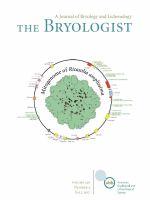Fungi exhibit some of the greatest reproductive diversity among Eukaryotes. In addition to sexual and asexual reproduction, fungi engage in parasexual processes (e.g., mitotic recombination), which results in new genetic variation. Lichenized fungi possess the full complement of reproductive processes present in their non-lichenized relatives but with further embellishment as a result of obligate symbiosis with algae and other organisms. Therefore, lichens serve as an excellent model system in reproductive biology, but no study has yet tested the commonly held assumption that lichen mycelia are haploid. We present new whole genome assemblies from seven unrelated lichens and use allelic ratio frequencies to estimate ploidy. Of these seven, three were derived from multispore mycelial cultures and the remaining four were derived from intact lichen thalli (i.e., from metagenomic reads). Data from the metagenome samples indicate that two are likely haploid or highly homozygous diploid as a result of clonal mating whereas the remaining two yielded highly skewed allelic ratios that warrant further study. In contrast, we recovered evidence consistent with a hypothesis of a diploid or dikaryotic rather than haploid mycelium for all three multispore cultures. The most likely explanation for the latter is an early developmental fusion of sporelings, or fusion of hyphae resulting from these sporelings, to yield a diploid or dikaryotic lichen mycelium. Our data provide insights into understanding lichen ploidy and reproduction in lichen-forming fungi.
How to translate text using browser tools
27 July 2017
A review of existing whole genome data suggests lichen mycelia may be haploid or diploid
Erin A. Tripp,
Yongbin Zhuang,
James C. Lendemer
ACCESS THE FULL ARTICLE

The Bryologist
Vol. 120 • No. 3
Fall 2017
Vol. 120 • No. 3
Fall 2017




